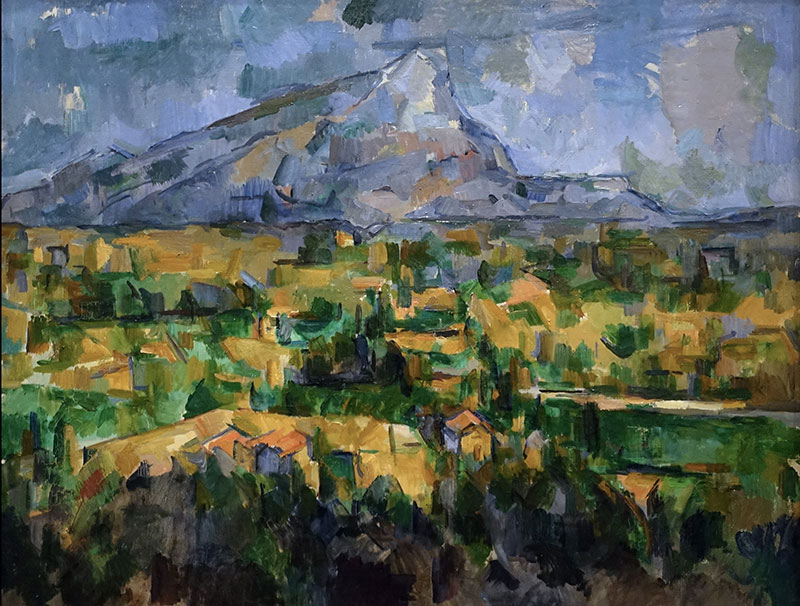Alright, so I finally got around to messing with Cezanne landscapes. I've always loved his style, that chunky, almost blocky way he paints, and the way he uses color is just unreal. I figured, why not try and recreate some of that magic myself?
First things first, I grabbed some reference images. I spent a good hour just scrolling through images of his landscapes, trying to pick out the ones that really spoke to me. I ended up settling on a few that had similar compositions, figuring that would make things a bit easier.
Next up was setting up my workspace. I dug out my old easel, got my paints ready, and stretched a canvas. I'm using acrylics 'cause that's what I have on hand, but I know Cezanne used oils. Whatever, gotta work with what you got, right?

Then came the sketching. I lightly sketched out the basic shapes and forms of the landscape onto the canvas. Nothing too detailed, just enough to give me a roadmap. I really tried to simplify things, thinking about how Cezanne reduced everything to its essential geometric shapes. This was actually harder than I thought it would be!
Now for the fun part – painting! I started by blocking in the main areas of color. I mixed up a bunch of different greens for the foliage, some blues and grays for the sky and mountains, and some browns and ochres for the earth. I tried to focus on getting the values right, rather than worrying about the exact hues.
Here's where it got tricky. Cezanne's all about those distinct, individual brushstrokes, so I really focused on applying the paint in small, deliberate strokes. I wasn't trying to blend anything too much; I wanted each stroke to stand on its own. This took a lot of patience, let me tell you.
I layered the paint, building up the colors and textures slowly. I kept stepping back to look at the painting from a distance, making sure the overall composition was working. I messed with it for hours. Adding more layers, adjusting the colors, refining the shapes. I swear, painting trees that looked even remotely like Cezanne's trees was a real challenge.
Finally, after what felt like forever, I decided to call it done. I stepped back, took a good hard look, and... well, it's not Cezanne, that's for sure. But it's definitely inspired by him, and I think I captured a little bit of his style. The colors are a bit brighter, the brushstrokes are a little less confident, but overall, I'm pretty happy with how it turned out.

Here's a quick recap of what I learned:
- Simplifying shapes is key. Cezanne really broke down the landscape into its essential geometric forms.
- Color is everything. Pay attention to value and hue, and don't be afraid to experiment.
- Individual brushstrokes are where the magic happens. Focus on applying the paint in small, deliberate strokes.
- Patience is a virtue. Building up the painting layer by layer takes time and effort.
I'm definitely gonna keep experimenting with this style. It's a really fun and challenging way to paint, and I think it's helped me to see the world in a new way. Maybe next time I'll try using oils...or maybe I'll just stick with acrylics. We'll see!
Anyways, that's my Cezanne landscape adventure. Hope you enjoyed hearing about it!












